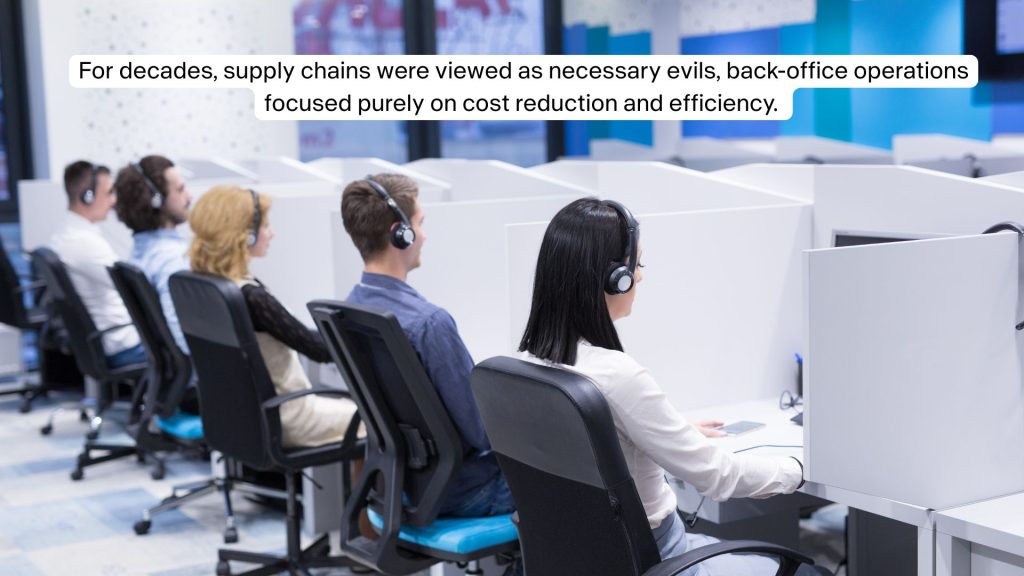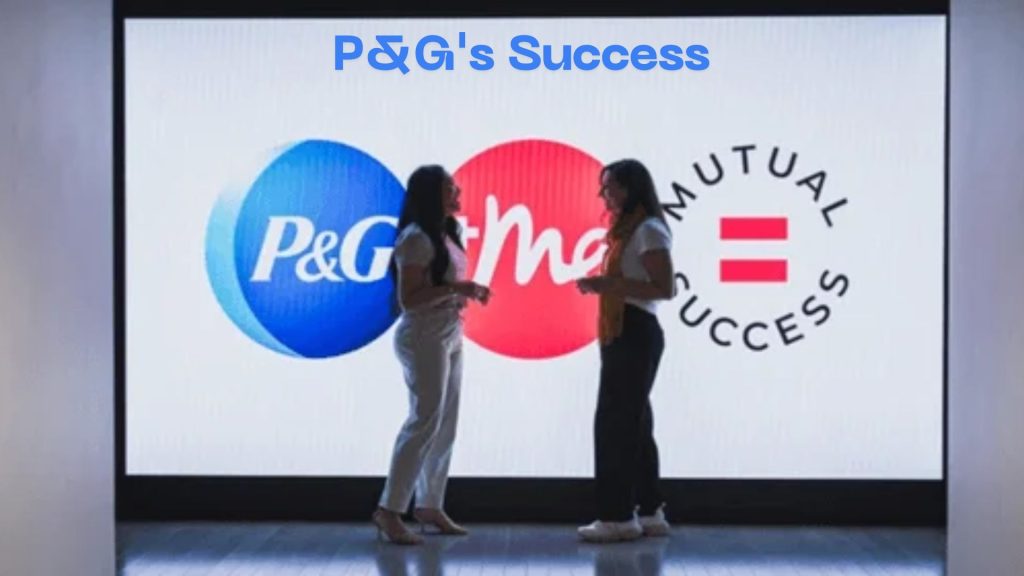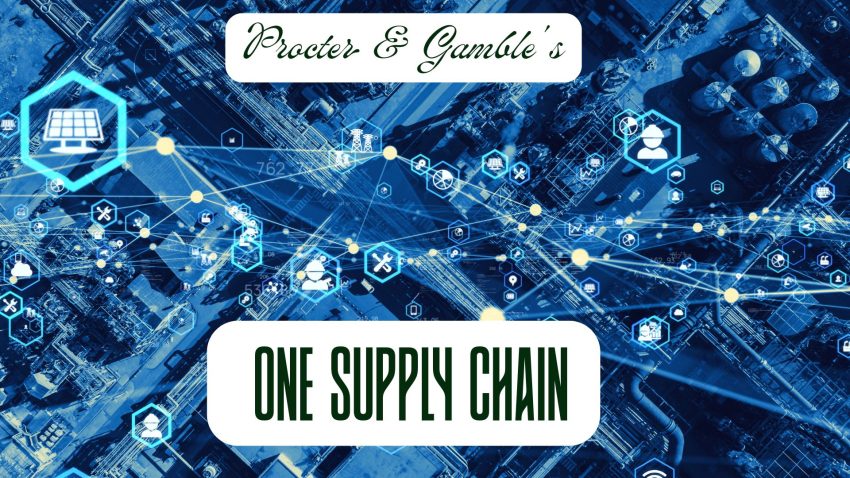For decades, supply chains were viewed as necessary evils, back-office operations focused purely on cost reduction and efficiency. But visionary companies like Walmart, Amazon, Apple, and Zara changed that narrative, proving that supply chain excellence could become a powerful competitive differentiator. Today, few companies exemplify this transformation better than Procter & Gamble, whose “One Supply Chain” approach has evolved their operations from a traditional cost center into a sophisticated growth orchestrator.
As supply chain leaders, we have much to learn from P&G’s journey. Here’s how their strategic approach can inform our own transformation efforts.
The Evolution: From Supply 1.0 to Supply 3.0
P&G’s supply chain transformation didn’t happen overnight. Their journey through three distinct phases offers a roadmap for other organizations:
Supply 1.0 focused on manufacturing excellence by achieving zero machine losses and 100% employee engagement. This represents where many companies still operate today: optimizing internal operations.
Supply 2.0 integrated the entire supply chain from material suppliers to product distribution, enabling the company to handle market volatility and demand surges. This phase recognized that true efficiency requires end-to-end thinking.
Supply 3.0 extends integration to retailers and consumers, creating a system that’s faster, more flexible, transparent, and cost-efficient. This is where the magic happens and supply chain becomes a growth driver.

The lesson? Supply chain transformation is evolutionary, not revolutionary. Each phase builds upon the previous one, and trying to jump directly to Supply 3.0 without mastering the fundamentals will likely fail.
The Four Pillars of P&G’s Success
P&G’s current strategy rests on four interconnected elements that every supply chain leader should consider:
1. Supply in Full
This isn’t just about having inventory, it’s about ensuring product availability wherever and whenever customers want to shop. P&G’s defining metric is on-shelf availability, because as Chief Product Supply Officer Luc Reynaert notes, “if the quality isn’t good, our consumers won’t buy it.”
Key Takeaway: Define your north star metric. For P&G, it’s on-shelf availability. What’s yours? Revenue growth? Customer satisfaction? Perfect order fulfillment? Choose one primary metric that aligns supply chain performance with business outcomes.
2. Seamless Data, Touchless Flow
P&G has achieved remarkable visibility by tracking products from warehouse to consumers’ shopping carts. This data flows seamlessly between business units, distribution centers, and retail partners, enabling joint business planning and proactive problem-solving.
Key Takeaway: Invest in data integration before automation. Without clean, flowing data, even the most sophisticated automation will underperform. Start by connecting your internal systems, then extend visibility to suppliers and customers.
3. Superior Employee Experience
Nearly two thirds of P&G’s workforce is in Product Supply, making employee experience critical. They’ve achieved 85% retention rates and high satisfaction scores by empowering employees and moving them from repetitive tasks to advanced analytics and optimization work.
Key Takeaway: Technology enables people, it doesn’t replace them. As you automate routine tasks, invest in upskilling your workforce for higher-value activities. Your supply chain transformation will only be as successful as your people’s ability to drive it.
4. Sustainability
P&G has embedded sustainability throughout their operations, from product design to transportation optimization. Their mixing centers can deliver to 85% of customers within 24 hours while maximizing truck utilization by combining heavy fabric care products with lighter baby care items.
Key Takeaway: Sustainability isn’t a separate initiative, it’s a lens through which to view all supply chain decisions. Often, sustainable solutions are also the most efficient ones.

The Power of “One Supply Chain”
Perhaps P&G’s most valuable lesson is their “One Supply Chain” concept. While each of their 10 product divisions operates independently, they share common automation strategies, technologies, and best practices. This approach allows for both scale and agility.
When Reynaert took his current role as Chief Product Supply Officer of Procter & Gamble, each division had its own automation strategy. Now, divisions choose from a menu of proven automation options, eliminating duplicate development efforts while maintaining operational autonomy.
This balance is crucial. Too much centralization stifles innovation and responsiveness. Too much decentralization wastes resources and limits scale advantages. P&G found the sweet spot: centralized strategy and technology development with decentralized execution.
Technology as an Enabler, Not a Solution
P&G’s technology investments are impressive. They’ve automated over 30% of manual processes in North American personal care with a goal of reaching 75%. But technology isn’t deployed for its own sake. Every automation decision serves the broader strategy of improving on-shelf availability and customer experience.
Their approach to AI and machine learning is particularly noteworthy. Rather than chasing the latest trends, they focus on applications that directly impact business outcomes: optimizing inventory levels, improving forecasting accuracy, and enhancing quality control.
Measuring What Matters
P&G tracks numerous metrics, but they all ladder up to business impact. Beyond on-shelf availability, they monitor cost to serve, on-time in-full delivery, consumption data, transportation optimization, promotional performance, sustainability metrics, and employee productivity.
The key insight? Every supply chain metric should connect to a business outcome. If you can’t draw a clear line from your KPIs to revenue, profit, or customer satisfaction, you’re tracking the wrong things.
The Business Impact
The results speak volumes. P&G’s revenue grew from $71 billion in 2020 to over $84 billion in 2024, all while continuously reducing costs. When a retailer recently ran a promotion, P&G’s connected systems immediately detected increased consumption, signaled manufacturing to increase production, and enabled seamless reordering—adding millions in incremental revenue during that single promotional period.
Lessons for Supply Chain Leaders
P&G’s transformation offers several actionable insights:
Start with Strategy, Not Technology: Define your vision before investing in tools. P&G’s success stems from their clear strategic framework, not their impressive technology stack.
Balance Autonomy with Alignment: Create centralized capabilities that business units can leverage while maintaining operational flexibility.
Invest in Your People: Technology amplifies human capability; it doesn’t replace the need for skilled, engaged employees.
Focus on Integration: Break down silos between functions, business units, and external partners. The magic happens at the intersections.
Make Sustainability Profitable: Environmental responsibility and business success aren’t mutually exclusive—often, they’re mutually reinforcing.
Measure Business Impact: Every supply chain initiative should connect to revenue, profit, or customer satisfaction.
The Path Forward
Transforming your supply chain from cost center to growth engine won’t happen overnight. It requires sustained leadership commitment, significant investment, and cultural change. But P&G’s journey proves it’s possible and profitable.
Start by assessing where you are in your own evolution. Are you still in Supply 1.0, optimizing internal operations? Ready to integrate with partners in Supply 2.0? Or prepared to create a truly connected, consumer-centric Supply 3.0 operation?
Whatever your starting point, P&G’s “One Supply Chain” approach offers a proven framework for transformation. The question isn’t whether your supply chain can become a growth driver whether you’re ready to lead that transformation.
The companies that master this transition will own the next decade of competitive advantage. The ones that don’t will be left managing costs while their competitors drive growth.
Which one will you choose?

1 thought on “How Procter & Gamble’s “One Supply Chain” Strategy Offers a Blueprint for Supply Chain Excellence”